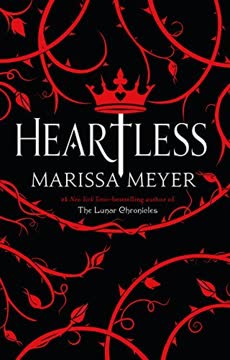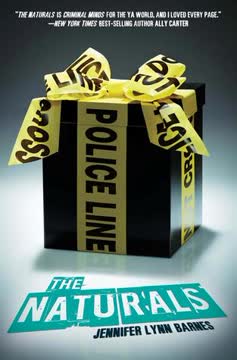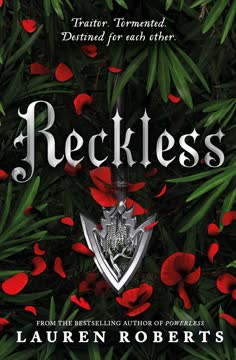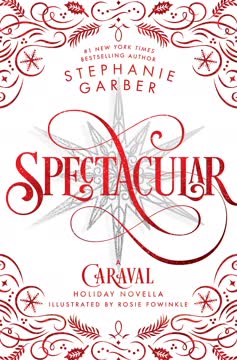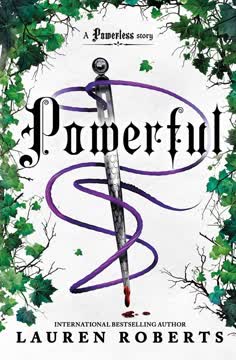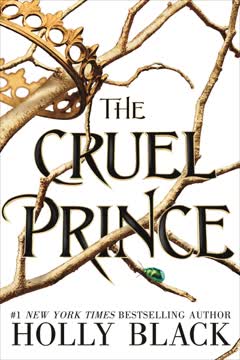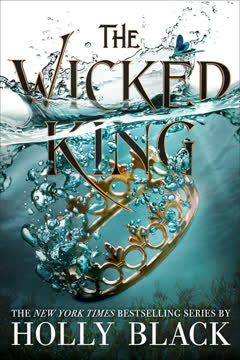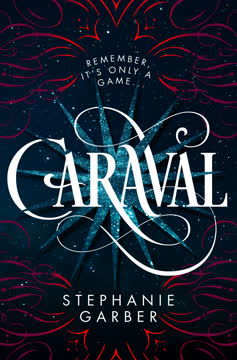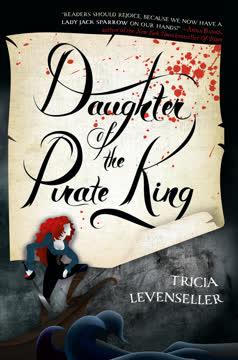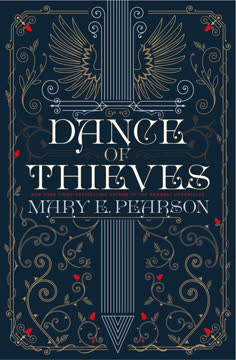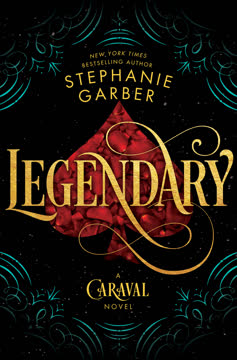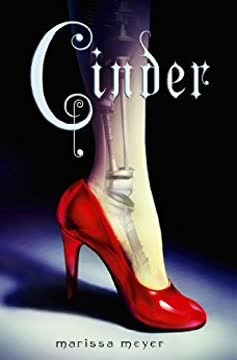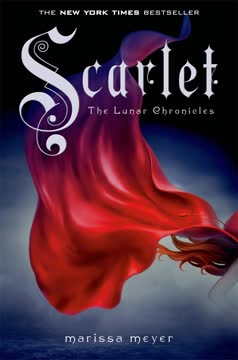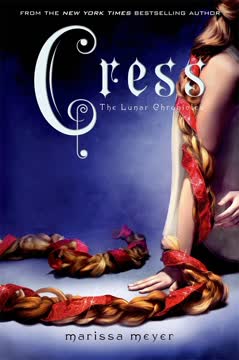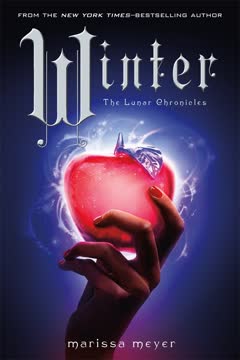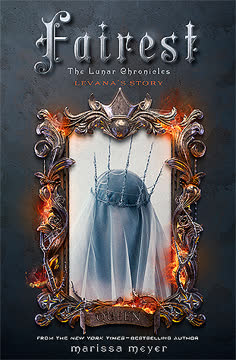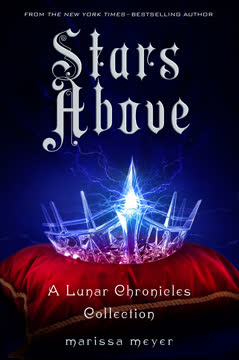Plot Summary
Lemon Tarts and Dreams
Catherine Pinkerton, daughter of the Marquess, is renowned for her exquisite pastries and dreams of opening a bakery with her best friend, Mary Ann. Despite her noble status and her mother's ambitions for her to marry well, Cath's true joy is found in the kitchen, where she pours her heart into her creations. Her dreams are vivid and sometimes prophetic, as when a lemon tree grows in her room after a dream, providing the fruit for her famous tarts. Cath's world is whimsical, filled with talking animals like Cheshire the cat, and is set in the fantastical Kingdom of Hearts, where tradition and expectation weigh heavily on her future.
The Red Dress Trap
Cath's mother, the formidable Marquesa, is determined to see her daughter become queen by marrying the King of Hearts. She forces Cath into a striking red dress for a royal ball, ignoring the event's black-and-white theme, ensuring Cath stands out and draws the King's attention. The dress becomes a symbol of Cath's lack of agency, as she is paraded before the court and subjected to the scrutiny and judgment of Hearts' aristocracy. The pressure to conform to her mother's and society's expectations is suffocating, and Cath's own desires are dismissed as childish fantasies.
A Joker Arrives
During the royal ball, the festivities are interrupted by the arrival of Jest, a mysterious and charismatic joker who performs dazzling feats of magic and wit. Jest's presence is electric, captivating Cath and the entire court. He poses riddles, conjures ravens, and pulls the White Rabbit from a hat, instantly becoming the King's new court joker. Jest's eyes—golden and enigmatic—remind Cath of her dream, and a spark of connection is ignited between them. Jest's arrival marks the beginning of Cath's internal conflict between duty and desire.
The King's Proposal
The King of Hearts, a bumbling but well-meaning monarch, is smitten with Cath and, encouraged by her mother, begins to court her with pastries, dances, and public attention. Cath is horrified at the prospect of becoming queen, knowing it would mean the end of her dreams and her independence. The King's proposal looms over her, and the pressure from her family and society intensifies. Cath's only solace is her friendship with Mary Ann and her growing fascination with Jest, who seems to understand her in ways no one else does.
Forbidden Pastries
Cath and Mary Ann secretly plan to open a bakery, even scouting a shop in town. Their dream is threatened by Cath's social status and her parents' disapproval. Meanwhile, Cath's encounters with Jest become more frequent and charged with romantic tension. Jest encourages her to pursue her own happiness, and their connection deepens. However, the threat of the King's proposal and the expectations of Hearts' society make their budding romance dangerous and forbidden.
The Garden Escape
When the King is about to propose at a royal garden party, Cath panics and flees into the palace gardens, desperate for air and freedom. Jest finds her there, and their chemistry is undeniable. He helps her escape the suffocating court, and they share a moment of vulnerability and laughter. Jest's magic and charm offer Cath a glimpse of a different life—one where she might choose her own destiny. Their bond is sealed with a secret midnight adventure, and Cath's heart is set on a path that will defy everything she's been taught.
Jest in the Moonlight
Under the moonlit roses, Cath and Jest share their dreams and fears. Jest reveals he is not just a joker, but a "Rook" (Torre) from the land of Chess, on a secret mission. Their conversation is filled with riddles, longing, and the promise of impossible things. Jest's world is one of magic and danger, and he hints at a destiny that intertwines with Cath's. Their connection deepens into love, but both know that their happiness is precarious, threatened by the forces of fate and the expectations of Hearts.
The Jabberwocky Attacks
The court is thrown into chaos when the mythical Jabberwocky attacks a royal event, abducting and killing courtiers. The monster's return, long thought impossible, shatters the illusion of safety in Hearts. Cath, Jest, and their friends are caught in the terror, and the event marks a turning point—innocence is lost, and the threat of violence and death becomes real. The attack also exposes the King's incompetence and the court's inability to protect its people, further fueling Cath's doubts about her future as queen.
Pastelería Dreams
Despite the trauma, Cath and Mary Ann continue to pursue their bakery dream, seeking support from the enigmatic Hatta, the Mad Hatter, who crafts magical hats. Hatta's hats have mysterious powers, subtly influencing those who wear them. Cath's pastries win acclaim, and she enters a baking contest at the Festival of Hearts, hoping to win the prize money to fund her shop. However, her social standing and the King's courtship cast a shadow over her ambitions, and the tension between duty and desire grows unbearable.
The Sombrerero's Secret
Hatta reveals the secret of his hats: they are made with materials from Chess, and they change those who wear them, sometimes dangerously. The magical boundaries between Hearts and Chess are thin, and Hatta's own sanity is fraying. The consequences of meddling with magic become clear when a judge at the baking contest, after eating Cath's enchanted pumpkin pie, transforms into a False Turtle—a grotesque, tragic creature. The incident is blamed on Cath, and her reputation is ruined. The cost of dreams, magic, and ambition is heartbreak and loss.
The Queen's Courtship
Cath is forced to choose between her love for Jest and her duty to her family and kingdom. The King's proposal becomes inescapable, and her parents threaten to disown her if she refuses. Jest reveals his true mission: he was sent from Chess to steal the heart of Hearts' future queen, believing it would end the endless war in his homeland. Cath is devastated by the revelation but still loves him. Together, they hatch a plan to escape Hearts and start a new life in Chess, but fate and prophecy conspire against them.
The Festival of Hearts
At the Festival of Hearts, Cath's pie is sabotaged, and the contest ends in disaster when the False Turtle transformation is revealed. The King publicly claims Cath as his future queen, and the court celebrates, oblivious to her misery. Cath's love for Jest is now a dangerous secret, and her dreams of the bakery are crushed. The festival, meant to be a celebration, becomes a stage for Cath's humiliation and the triumph of fate over free will.
The Croquet Game
A royal croquet game becomes a microcosm of the court's politics and Cath's internal struggle. Jest and Cath's flirtation is interrupted by the King's jealousy and the machinations of the court. The game, filled with living hedgehogs and flamingos, is both absurd and deadly serious. Cath's skill and wit shine, but the game ends with the King's victory and Cath's further entrapment in the royal marriage plot. Jest's warnings about fate and prophecy grow more urgent.
The False Turtle
The magical contamination from Chess spreads, and the consequences of Hatta's hats and Cath's pie become clear. The transformation of the judge into a False Turtle is a public scandal, and Cath is blamed. The court turns against her, and her dreams are shattered. The magical boundaries between Hearts and Chess are breaking down, and the cost of meddling with fate is paid in suffering and loss. Cath's guilt and grief threaten to consume her.
The Melaza Well
After a violent encounter with the Jabberwocky, Cath is gravely injured. Jest takes her to the legendary Well of Melaza, a magical place between worlds, where her wounds are healed at a mysterious price. The Well is guarded by the Three Sisters, enigmatic beings who demand payment for their magic. The journey to the Well is a test of desperation and love, and Cath and Jest's bond is deepened by their shared ordeal. But the price of magic is always high, and the Well's power is not without consequences.
The Impossible Choice
Cath and Jest, aided by Hatta and Cuervo, attempt to escape Hearts through the labyrinth that leads to Chess. The Three Sisters warn them of a prophecy: one will be a murderer, one a martyr, one a monarch, and one will go mad. As they navigate the labyrinth, Cath is forced to choose between saving her friend Mary Ann, who is in mortal danger, and escaping to happiness with Jest. She chooses to save Mary Ann, setting in motion the tragic fulfillment of the prophecy.
The Labyrinth of Fate
In the climactic confrontation, Cath faces Sir Peter Peter, whose actions have unleashed the Jabberwocky and led to Jest's death. Consumed by grief and rage, Cath kills the Jabberwocky and demands vengeance on Peter. The Three Sisters return, offering her the chance for revenge in exchange for her heart. Cath accepts, sacrificing her capacity for love and joy in order to become the instrument of vengeance. Her transformation is complete: she is no longer the girl who dreamed of pastries and love, but the Queen of Hearts, defined by loss and fury.
The Price of Vengeance
Cath, now Queen, is hollowed by grief and vengeance. She sentences Peter to death, uttering the words that will define her legacy: "Off with his head." The court, the King, and all of Hearts are terrified of her newfound ruthlessness. The Three Sisters claim her heart, leaving her incapable of love or happiness. The prophecy is fulfilled: Jest is the martyr, Hatta goes mad, and Cath becomes the feared monarch. The story ends with Cath's transformation into the Queen of Hearts, her dreams and love lost forever, her only legacy a reign of terror and the echo of her broken heart.
Characters
Catherine Pinkerton
Catherine is the protagonist, a young noblewoman with a passion for baking and a longing for independence. She is intelligent, creative, and compassionate, but is trapped by the expectations of her family and society. Her journey is one of transformation—from a hopeful dreamer in love with Jest and her own ambitions, to a woman broken by loss, betrayal, and the cruelty of fate. Cath's psychological arc is a descent: her love and hope are systematically stripped away, replaced by rage and a thirst for vengeance. Her relationships—with Mary Ann, Jest, her parents, and the King—are defined by longing, disappointment, and the impossibility of reconciling her desires with her reality. By the end, she is the Queen of Hearts, her heart literally and metaphorically lost.
Jest
Jest is the court joker, a magical and mysterious figure from the land of Chess. He is charming, witty, and deeply empathetic, but also burdened by a secret mission: to steal the heart of Hearts' future queen and end the war in his homeland. Jest's love for Cath is genuine, and he becomes her confidant, co-conspirator, and soulmate. His psychological complexity lies in his conflict between duty and love, and his willingness to sacrifice everything for Cath's happiness. Jest's fate as the martyr is both a fulfillment of prophecy and a devastating loss for Cath, symbolizing the destruction of hope and the triumph of fate over free will.
Mary Ann
Mary Ann is Cath's best friend, maid, and business partner in the dream of opening a bakery. She is practical, intelligent, and fiercely loyal, but also constrained by her social status and her own fears. Mary Ann's relationship with Cath is central to the story, providing both support and, ultimately, betrayal—her well-intentioned actions inadvertently lead to Jest's death and Cath's transformation. Mary Ann represents the cost of dreams deferred and the pain of losing one's chosen family.
The King of Hearts
The King is a childlike, bumbling monarch who is infatuated with Cath and seeks to make her his queen. He is kind but clueless, more interested in pastries and parties than ruling. His courtship of Cath is both comic and tragic, as he is oblivious to her misery and the consequences of his inaction. The King's inability to protect his kingdom or Cath from harm is a key factor in her disillusionment and eventual transformation.
Hatta (The Mad Hatter)
Hatta is the eccentric hatmaker whose magical creations influence the fates of those who wear them. He is brilliant, ambitious, and increasingly unhinged, haunted by the fear of madness that runs in his family. Hatta's actions—bringing magical seeds from Chess, making enchanted hats—set in motion many of the story's tragedies. His relationship with Cath and Jest is fraught with jealousy, guilt, and the knowledge that he is both a creator and a destroyer. Hatta's descent into madness fulfills the prophecy and serves as a warning about the dangers of unchecked ambition and meddling with fate.
Cuervo (The Raven)
Cuervo is Jest's loyal friend and a former executioner from Chess, often speaking in riddles and poetic allusions. He is a figure of doom and prophecy, guiding and warning the protagonists. Cuervo's presence is a constant reminder of the story's tragic trajectory, and his transformation into a harbinger of death at Cath's command marks the final loss of innocence and hope.
The Marquesa (Cath's Mother)
The Marquesa is determined to see Cath become queen, embodying the oppressive expectations of society and family. She is manipulative, emotionally volatile, and dismissive of Cath's dreams. Her relationship with Cath is defined by love twisted into control, and her inability to see her daughter's true desires contributes to Cath's downfall.
Sir Peter Peter
Peter is a rough, resentful farmer whose actions—feeding his wife the magical calabazas from Chess—unleash the Jabberwocky and set off the chain of tragedies. His desperation, grief, and violence make him both a victim and a villain. Peter's confrontation with Cath is the climax of her transformation, as she chooses vengeance over mercy.
The Three Sisters (Tillie, Elsie, Lacie)
The Three Sisters are mysterious, ageless entities who guard the Well of Melaza and the passage between Hearts and Chess. They demand payment for their magic and prophecy the fates of the main characters. Their role is that of fate personified: they offer choices, but always at a terrible price. Their bargain with Cath—her heart for vengeance—seals her transformation into the Queen of Hearts.
Cheshire
Cheshire is the ever-present, sardonic cat who observes, comments, and sometimes intervenes in the story's events. He represents the voice of skepticism and the inevitability of fate, often warning Cath of the dangers ahead. Cheshire's detachment and wit provide both comic relief and a chilling reminder of the story's tragic inevitability.
Plot Devices
Fate vs. Free Will
The narrative is structured around the tension between fate and free will. The Three Sisters' prophecy—one will be a murderer, one a martyr, one a monarch, one will go mad—hangs over the characters, shaping their choices and actions. Despite Cath's efforts to escape her destiny, every attempt to assert her will only brings her closer to the prophesied outcome. The story uses foreshadowing, dreams, and magical warnings to reinforce the sense of inevitability, while also exploring the psychological torment of fighting against a predetermined fate.
Magical Realism and Symbolism
Magic permeates the world of Hearts, from Cath's prophetic dreams and the enchanted lemon tree to Hatta's transformative hats and the Well of Melaza. These magical elements serve as symbols of hope, ambition, and the dangers of meddling with forces beyond one's understanding. Transformation—both literal and metaphorical—is a recurring motif, representing the loss of innocence, the cost of ambition, and the irreversible consequences of choice.
Tragic Romance
The love story between Cath and Jest is the emotional core of the novel, driving the plot and Cath's transformation. Their romance is marked by secrecy, longing, and the constant threat of discovery. The tension between love and duty, happiness and sacrifice, is explored through their relationship, culminating in Jest's martyrdom and Cath's descent into vengeance. The romance is both a source of hope and the catalyst for tragedy.
Social Satire and Absurdity
The world of Hearts is a satirical reflection of Victorian society, filled with absurd rituals, arbitrary rules, and the tyranny of appearances. The court's obsession with pastries, parties, and propriety masks a deep-seated rot and incompetence. The King's ineptitude, the court's fickleness, and the meaningless trials highlight the absurdity of power and the dangers of blind conformity.
Psychological Descent
The narrative structure follows Cath's psychological descent from hopeful dreamer to vengeful queen. Each loss—of love, friendship, dreams, and agency—strips away her humanity, leaving only rage and the desire for retribution. The use of internal monologue, dreams, and symbolic imagery (hearts, roses, blood) deepens the reader's understanding of her transformation and the cost of vengeance.
Analysis
Heartless is a masterful reimagining of the Queen of Hearts' origin, blending whimsy and darkness to explore the making of a villain. Marissa Meyer crafts a world where dreams and magic are both enchanting and perilous, and where the struggle between fate and free will is both personal and universal. The novel interrogates the cost of ambition, the pain of unfulfilled dreams, and the destructive power of grief and vengeance. Catherine's journey is a cautionary tale about the dangers of denying one's true self and the consequences of choices made under pressure. The story's tragic inevitability is heightened by its playful, absurd setting, making the final transformation all the more devastating. Heartless ultimately asks: what happens when a heart is broken beyond repair? The answer is a queen whose only legacy is the echo of her own pain—"Off with his head."
Last updated:
FAQ
Synopsis & Basic Details
What is Heartless about?
- Aspiration vs. Expectation: Heartless follows Catherine Pinkerton, a talented baker in the whimsical Kingdom of Hearts, who dreams of opening a pastry shop with her best friend, Mary Ann. However, her ambitious mother, the Marquesa, is determined for Cath to marry the King of Hearts and become queen, a destiny Cath dreads.
- Forbidden Connection: Amidst the King's bumbling courtship and the suffocating societal pressures, Cath finds herself drawn to Jest, the mysterious and charming new court joker. Their clandestine meetings and shared moments of magic ignite a forbidden romance that challenges Cath's predetermined path.
- Descent into Darkness: As a mythical monster, the Jabberwocky, terrorizes the kingdom, and magical elements from the neighboring land of Chess begin to bleed into Hearts, Cath's world unravels. Betrayal, loss, and a devastating personal tragedy force her to make impossible choices, ultimately transforming her from a hopeful dreamer into the feared Queen of Hearts.
Why should I read Heartless?
- Villain Origin Story: Readers should delve into Heartless for its compelling and tragic exploration of how a beloved character transforms into a notorious villain. It offers a nuanced look at the forces—both external and internal—that shape Catherine's descent, making her journey relatable despite its fantastical setting.
- Rich World-Building: Marissa Meyer crafts a vibrant, yet subtly dark, reimagining of Wonderland, filled with familiar characters given fresh depth and new, intriguing magical elements. The blend of whimsical absurdity with genuine peril creates a unique and immersive reading experience.
- Emotional Depth & Conflict: The novel excels in its emotional complexity, particularly in portraying Catherine's internal struggle between duty, love, and self-preservation. It's a story about the devastating cost of unfulfilled dreams and the destructive power of grief and vengeance, resonating with themes of fate versus free will.
What is the background of Heartless?
- Literary Allusion & Reimagining: Heartless is a prequel to Lewis Carroll's Alice's Adventures in Wonderland, specifically focusing on the origin story of the Queen of Hearts. Meyer draws heavily from Carroll's characters and whimsical tone, but infuses it with a darker, more tragic narrative, exploring the "why" behind the Queen's infamous cruelty.
- Victorian Social Commentary: The Kingdom of Hearts, with its rigid social hierarchy, absurd courtly rituals, and emphasis on appearances, serves as a satirical mirror to Victorian society. Cath's struggle against her mother's ambition and the King's ineptitude highlights the oppressive expectations placed upon women of noble birth during that era.
- Intertextual Playfulness: The novel cleverly weaves in elements from other literary works, such as Edgar Allan Poe's "The Raven" (through Cuervo's dialogue) and Shakespearean plays (like "King Lear" and "The Taming of the Shrew" referenced in theater productions), adding layers of intertextual richness and foreshadowing.
What are the most memorable quotes in Heartless?
- "My dear, sweet, stupid child." (The Marquesa, Chapter 8): This quote, frequently uttered by Cath's mother, encapsulates the Marquesa's condescending affection and her inability to see Cath's true desires or capabilities beyond her own ambitions for her daughter. It highlights the suffocating maternal pressure that drives much of Cath's early conflict.
- "My specialty is the impossible." (Jest, Chapter 7): Jest's declaration to Catherine not only defines his magical abilities and role as a joker but also serves as a recurring motif for their forbidden love and Cath's own desperate hopes. It becomes a poignant reminder of the dreams that ultimately prove impossible in the face of fate.
- "Off with his head." (Catherine, Chapter 54): The iconic phrase, uttered by Catherine in the novel's climax, marks her complete transformation into the Queen of Hearts. It signifies the ultimate triumph of vengeance and the irreversible loss of her former self, becoming a chilling echo of her broken heart and shattered innocence.
What writing style, narrative choices, and literary techniques does Marissa Meyer use?
- Whimsical yet Gothic Tone: Meyer masterfully blends the whimsical, absurd elements characteristic of Wonderland with a growing sense of gothic dread and tragedy. This tonal shift mirrors Catherine's psychological descent, starting light and becoming increasingly dark as the story progresses.
- Symbolic Imagery & Motifs: The narrative is rich with recurring symbols, such as the color red (passion, danger, royalty), hearts (love, vulnerability, the kingdom itself), and various food items (representing Cath's true self, comfort, or corruption). The motif of "transformation" is central, both literal (False Turtle, Jabberwocky) and metaphorical (Catherine's change).
- Foreshadowing & Prophecy: Meyer employs extensive foreshadowing, particularly through Cath's prophetic dreams, the enigmatic pronouncements of the Three Sisters, and Cuervo's cryptic rhymes. This creates a strong sense of inevitability, reinforcing the theme of fate versus free will, even as characters attempt to defy their destinies.
Hidden Details & Subtle Connections
What are some minor details that add significant meaning?
- Recurring Dream-Plants: Beyond the initial lemon tree (Chapter 1), Cath's dreams manifest new plants in her room, like white roses (Chapter 8) and bleeding hearts (Chapter 49). These aren't just whimsical details; they subtly track her emotional state and the progression of her relationship with Jest (lemon for his eyes, white roses for their secret love, bleeding hearts for her grief and hardening).
- Hatta's Hat-Making Materials: Hatta's use of "unique materials" from Chess, such as "soft, worn shards of sea glass," "fish scales," and "bones" (Chapter 31), subtly foreshadows the magical contamination and transformations that plague Hearts. It hints that the magic isn't just whimsical but has tangible, sometimes dangerous, origins from the war-torn land of Chess.
- The King's "Sweet Pastry" Affection: The King's consistent description of Cath as his "sweet pastry" or "decadent truffle" (Chapter 23, 32, 39) is more than just a quirky endearment. It highlights his superficial understanding of her, reducing her to her baking talent rather than seeing her as a complex individual, reinforcing why their union is doomed to be loveless.
What are some subtle foreshadowing and callbacks?
- The "Raven and Writing Desk" Riddle: Jest's initial riddle (Chapter 4) and Hatta's later, darker interpretation (Chapter 52) are direct callbacks to Lewis Carroll's original, but Meyer uses them to foreshadow Hatta's descent into madness and the tragic, poetic nature of Jest's fate. The riddle's "few interesting notes" and "black-stained feathers" become grim metaphors for their destinies.
- Peter Peter's Pumpkin Patch Destruction: The burnt, abandoned section of Peter Peter's pumpkin patch (Chapter 24) subtly foreshadows the origin of the Jabberwocky. It implies that the magical pumpkins from Chess, brought by Hatta, were already causing destructive transformations before Cath's pie, hinting at a deeper, pre-existing corruption.
- The Three Sisters' Payment Demands: The Sisters' requests for specific items (Jest's bells, Cuervo's feather, Hatta's time, Cath's "un-used kiss" and later "heart") are not arbitrary. They foreshadow the sacrifices and losses each character will endure, particularly Jest's eventual martyrdom (losing his bells) and Cath's ultimate emotional hollowing (her heart).
What are some unexpected character connections?
- Hatta and Peter Peter's Shared History: It's revealed that Hatta gave Peter Peter the "cursed" pumpkin seeds from Chess years ago (Chapter 52), directly linking Hatta to the origin of the Jabberwocky and Lady Peter's transformation. This unexpected connection makes Hatta a more direct catalyst for the tragedy than initially perceived.
- The Duchess and Margaret Mearle's Romance: The Duke of Tuskany, initially portrayed as arrogant and aloof, is revealed to secretly adore Margaret Mearle (Chapter 9). This unexpected romantic interest, facilitated by Cath, highlights the Duke's hidden shyness and Margaret's own surprising capacity for love, contrasting with Cath's doomed romance.
- Cuervo's Past as an Executioner: Cuervo's revelation that he was once the White Queen's executioner (Chapter 47) is a surprising twist for a seemingly somber companion. This past role directly foreshadows his eventual transformation back into the hooded executioner at Cath's command, linking his loyalty to a history of violence and fate.
Who are the most significant supporting characters?
- The Three Sisters (Tillie, Elsie, Lacie): Beyond their role as oracular beings, the Sisters are pivotal agents of fate, directly influencing the plot through their prophecies and demands for payment. Their chilling, synchronized dialogue and unsettling youthfulness underscore the inescapable nature of destiny and the high price of magic, making them more than just plot devices.
- Sir Peter Peter: While a villain, Peter is a significant supporting character because his actions (feeding his wife the cursed pumpkins, his grief-fueled rage) are the direct catalyst for the Jabberwocky's rampage and Jest's death. His character highlights the destructive consequences of unchecked desperation and the spread of Chess's magic into Hearts.
- The White Rabbit: Often a figure of comic relief, the White Rabbit's constant anxiety and obsession with time (Chapter 1, 3, 28) subtly reflect the underlying chaos and impending doom in Hearts. His role as the King's herald also places him at the center of many awkward social situations, highlighting the absurdity of the court.
Psychological, Emotional, & Relational Analysis
What are some unspoken motivations of the characters?
- The Marquesa's Fear of Social Decline: While her ambition for Cath is overt, the Marquesa's relentless push for the royal marriage is subtly driven by a deep-seated fear of losing her family's standing. Her constant worry about appearances and her family's "contribution" to the kingdom (the festival, Chapter 29) suggest a desperate need to secure their status, which she believes only a royal marriage can guarantee.
- Hatta's Desire for Control over Madness: Hatta's ambition to be the "greatest hatmaker" and his constant battle with his family's "madness" (Chapter 31, 52) reveal a deeper motivation: a desperate attempt to control his own inherited fate. His manipulation of others and his detached demeanor are a defense mechanism, a way to assert control in a world where his own sanity is precarious.
- Jest's Internal Conflict over His Mission: Jest's initial mission is to "steal the heart" of the future Queen of Hearts for Chess (Chapter 36). His growing love for Cath creates an unspoken internal conflict, evident in his hesitation and eventual confession. His actions, like advising the King on courtship (Chapter 27), are a twisted fulfillment of his mission, but his true motivation shifts to protecting Cath, even at his own expense.
What psychological complexities do the characters exhibit?
- Catherine's Dissociation and Emotional Numbness: As Cath endures repeated betrayals and losses, she develops a psychological complexity marked by dissociation. After Jest's death, she describes herself as "hollow" (Chapter 51) and "empty and numb" (Chapter 54), a coping mechanism to survive the unbearable pain. This isn't just a plot outcome but a profound psychological shift, where her capacity for joy and love is literally severed.
- The King's Avoidance of Responsibility: The King, despite his kind nature, exhibits a complex psychological avoidance of responsibility. He prefers to be distracted by trivialities like pastries and croquet (Chapter 12, 26) rather than confront the growing threats to his kingdom (Jabberwocky attacks, Jest's "betrayal"). His "idiocy" is a form of self-preservation, allowing him to remain blissfully ignorant of the harsh realities of his reign.
- Mary Ann's Practicality vs. Heroism: Mary Ann's character is complex in her oscillation between grounded practicality and a surprising yearning for heroism. Her initial skepticism about the bakery dream (Chapter 8) and her later, ill-fated attempt to "be a hero" by confronting Peter Peter (Chapter 46) reveal a hidden desire for significance beyond her station, which ultimately leads to unintended consequences.
What are the major emotional turning points?
- The First Dream-Plant (Lemon Tree): The appearance of the lemon tree in Cath's room (Chapter 1) is a subtle but significant emotional turning point. It marks the first tangible manifestation of her dreams and her connection to Jest, igniting a sense of wonder and possibility that contrasts sharply with her mundane noble life.
- Jest's Confession of Love and Mission: Jest's revelation that he was sent to "steal her heart" (Chapter 36) is a devastating emotional turning point. It shatters Cath's perception of their romance, forcing her to confront the possibility that their love was a calculated part of his mission, leading to profound heartbreak and a re-evaluation of her choices.
- Catherine's Decision to Accept the King's Proposal (as a Means to an End): Cath's public acceptance of the King's proposal (Chapter 50), not out of love but as a strategic move for vengeance, is a critical emotional turning point. It signifies her conscious sacrifice of personal happiness and her embrace of a darker path, marking the beginning of her transformation into the Queen of Hearts.
How do relationship dynamics evolve?
- Catherine and Mary Ann: From Partnership to Betrayal: Their relationship evolves from a close, supportive friendship built on shared dreams of a bakery (Chapter 2, 9) to one strained by Mary Ann's well-intentioned but disastrous betrayal (revealing Cath's secret to her parents, Chapter 38). This leads to Cath's bitter rejection of Mary Ann, symbolizing the loss of her most cherished bond and the innocence of her dreams.
- Catherine and Jest: From Whimsical Romance to Tragic Sacrifice: Their dynamic shifts from playful flirtation and secret rendezvous (Chapter 6, 17) to a deep, passionate love (Chapter 36). However, their relationship is constantly threatened by external forces and Jest's mission, culminating in his self-sacrifice (Chapter 47) to protect Cath, solidifying his role as her martyr and the catalyst for her vengeance.
- Catherine and Her Parents: From Filial Duty to Resentment: Initially, Cath is largely compliant with her parents' wishes, albeit reluctantly (Chapter 2, 15). Their refusal to support her bakery dream and their insistence on the royal marriage (Chapter 30) escalate her resentment. The final confrontation, where her father threatens Mary Ann (Chapter 30) and her mother dismisses her feelings (Chapter 38), irrevocably breaks their bond, pushing Cath towards a path of defiance and ultimately, cruelty.
Interpretation & Debate
Which parts of the story remain ambiguous or open-ended?
- The True Nature of the Three Sisters: While they are presented as oracular beings and agents of fate, their motivations and ultimate allegiances remain ambiguous. Are they truly neutral, simply revealing destiny, or do they actively manipulate events for their own mysterious purposes, as suggested by their "payment" demands and cryptic laughter (Chapter 42, 43)?
- The Extent of Hatta's Madness: Hatta's "madness" is a family curse, but the degree to which it influences his actions versus his conscious choices is debatable. Is his detachment and manipulation a symptom of his impending madness, or a calculated strategy to survive and achieve his ambitions, as he claims to "know a secret" to avoid his fate (Chapter 31)?
- The Future of Chess and Hearts: The novel ends with Cath as the Queen of Hearts and Jest as the martyr, implying the war in Chess might continue or change. The long-term consequences of Cath's "stolen" heart on the balance of power in Chess, and whether her reign of terror in Hearts truly brings stability or just a new form of chaos, are left open to interpretation.
What are some debatable, controversial scenes or moments in Heartless?
- Catherine's Rejection of Mary Ann: Cath's harsh dismissal of Mary Ann (Chapter 38, 51) after Mary Ann's well-intentioned but disastrous betrayal is a controversial moment. While Cath is in immense pain, her cruelty towards her loyal friend raises questions about the speed and depth of her transformation, and whether her "heartlessness" is truly justified or a tragic overreaction.
- The Justification of Jest's "Heart-Stealing" Mission: Jest's initial mission to "steal the heart" of the future Queen of Hearts (Chapter 36) is debatable. While he falls in love with Cath, the premise of his mission—to manipulate her emotions for a political end—can be seen as morally ambiguous, even if his intentions later shift to genuine affection.
- The Morality of the Three Sisters' Prophecies: The Sisters' prophecies, particularly "Assassin, Martyr, Monarch, Madman," are presented as inevitable (Chapter 43). However, the debate lies in whether these prophecies are truly unchangeable fate or if the Sisters' pronouncements and demands for payment actively force the characters into these roles, thus making them complicit in the tragedy.
Heartless Ending Explained: How It Ends & What It Means
- The Final Transformation & Loss of Heart: The novel culminates in Catherine's complete metamorphosis into the Queen of Hearts. After Jest's death at Peter Peter's hand, Cath, consumed by grief and a thirst for vengeance, makes a pact with the Three Sisters. They take her broken heart, leaving her emotionally numb but empowered to exact retribution. She then, as Queen, sentences Peter Peter to beheading, uttering her infamous catchphrase, "Off with his head" (Chapter 54).
- The Price of Vengeance & Fate's Triumph: The ending signifies the devastating cost of vengeance and the triumph of fate over free will. Catherine sacrifices her capacity for love, joy, and empathy to become a ruthless monarch. Jest becomes the "martyr," Hatta descends into "madness," and Cath becomes the "monarch," fulfilling the Sisters' prophecy. Her heart is literally removed, symbolizing her emotional desolation and the complete loss of the girl who dreamed of baking and love.
- A Cycle of Pain & The Birth of a Villain: The ending is not a happy one, but a tragic origin story. It explains why the Queen of Hearts is so cruel and obsessed with beheadings: it's a direct consequence of her profound loss and the emotional void left by her broken heart. The narrative suggests that her tyranny is born from deep pain and a desire to control a world that relentlessly took everything from her, perpetuating a cycle of suffering rather than breaking it.
Review Summary
Heartless received mixed reviews from readers. Many praised Meyer's writing and world-building, enjoying the Wonderland-inspired setting and characters. The tragic love story between Catherine and Jest resonated with some, while others found the romance underdeveloped. Some readers appreciated Catherine's character arc, while others found her frustrating. The ending was divisive, with some finding it heartbreaking and others disappointed. Overall, fans of Meyer's previous work and Alice in Wonderland retellings tended to enjoy the book more, though it wasn't universally loved.
Similar Books
Download PDF
Download EPUB
.epub digital book format is ideal for reading ebooks on phones, tablets, and e-readers.
